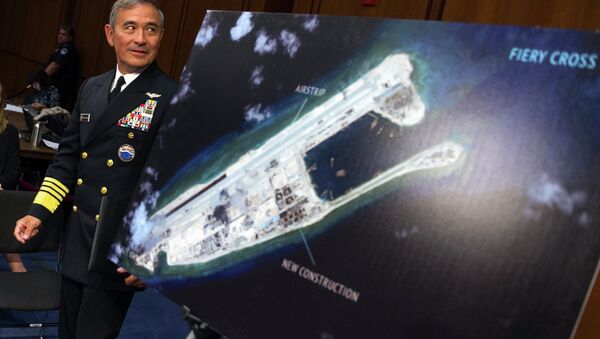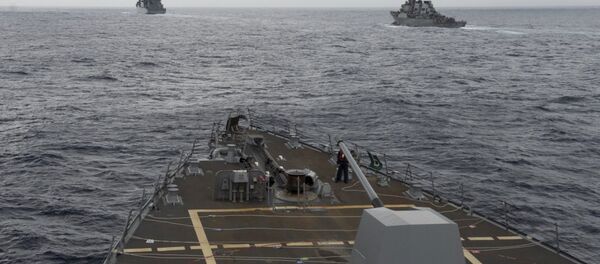China has denounced the patrol for threatening its sovereignty and security in the South China Sea.
"China always respects the freedom of navigation and overflight all countries enjoy under international law. But we are consistently opposed to relevant countries threatening and damaging the sovereignty and security of littoral countries under the flag of freedom of navigation and overflight," Chinese foreign ministry spokesman Geng Shuang told journalists commenting on the matter.
On Wednesday, Reuters, citing two unnamed US officials, reported that "China has nearly finished building almost two dozen structures on artificial islands in the South China Sea that appear designed to house long-range surface-to-air missiles."
"It is not like the Chinese to build anything in the South China Sea just to build it, and these structures resemble others that house SAM [surface-to-air missiles] batteries, so the logical conclusion is that's what they are for," the agency quotes a US intelligence official as saying.
Another official said the structures appeared to be 20 meters (66 feet) long and 10 meters (33 feet) high.
"China carrying out normal construction activities on its own territory, including deploying necessary and appropriate territorial defense facilities, is a normal right under international law for sovereign nations," he told reporters.
Commenting on the recent developments in the area, RIA Novosti political analyst Alexander Khrolenko provided his own take on the risk of a direct military standoff between China and the US, explaining that even though tensions are high, the risk of escalation is actually quite low.
"Washington has not changed its position on the disputed territories and defined water zones in the South China Sea with the election of Donald Trump. Many political analysts see the conflict between the US and China over the issue potentially more dangerous that the disputes between Russia and NATO in Europe," he writes in his article for RIA Novosti.
"However unchanged political rhetoric and the unpredictability of the latest events only demonstrate that any naval clashes off China's coast are very unlikely," the political analyst said, reminding the recent claims of US new defense secretary that there is no need for large-scale US actions in the South China Sea.
He further provided his reasons why the US' policy of "containment of China" is so contradictory.
Up to one third of the world's naval freight traffic volume goes through the South China Sea, as well as 75 per cent of the Middle Eastern crude oil shipments to the Asia Pacific Region, over 40 percent of which are going to China. Over $5 trillion of world trade transit annually (including $1.2 trillion in US trade transits annually) goes through this part of the World Ocean.
"The growth of China's economic and political influence has the US worried, but they have practically no means to hinder this process. It is not by chance that one of the most influential Chinese papers, People.cn has urged Beijing not to allow the US to disrupt the status quo in the South China Sea," the political analyst said.
He finally stated that it has become evident that the development of China's economy and its armed forces will allow China to further peacefully develop resources of the three adjacent seas and other areas of the World Ocean regardless of the US Washington's will and Pentagon's "signals."
Never miss a story again — sign up to our Telegram channel and we'll keep you up to speed!





